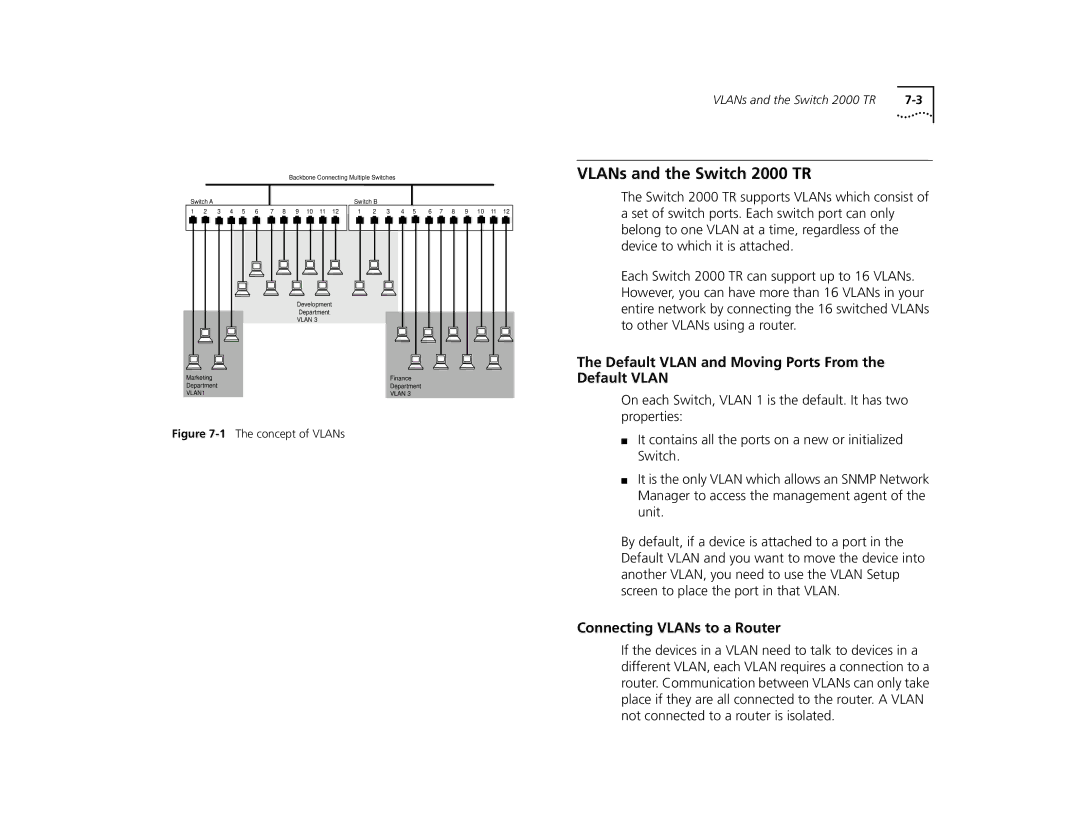
Backbone Connecting Multiple Switches
Switch A | Switch B |
VLANs and the Switch 2000 TR |
VLANs and the Switch 2000 TR
The Switch 2000 TR supports VLANs which consist of
1 | 2 | 3 | 4 | 5 | 6 | 7 | 8 | 9 | 10 | 11 | 12 |
|
|
|
|
|
|
|
| Development |
| ||
|
|
|
|
|
|
|
| Department |
| ||
|
|
|
|
|
|
|
| VLAN 3 |
|
| |
Marketing |
|
|
|
|
|
|
|
|
|
| |
Department |
|
|
|
|
|
|
|
|
| ||
VLAN1 |
|
|
|
|
|
|
|
|
|
| |
1 | 2 | 3 | 4 | 5 | 6 | 7 | 8 | 9 | 10 | 11 | 12 |
|
|
| Finance |
|
|
|
|
|
|
|
|
|
|
| Department |
|
|
|
|
|
|
| |
|
|
| VLAN 3 |
|
|
|
|
|
|
|
|
a set of switch ports. Each switch port can only belong to one VLAN at a time, regardless of the device to which it is attached.
Each Switch 2000 TR can support up to 16 VLANs. However, you can have more than 16 VLANs in your entire network by connecting the 16 switched VLANs to other VLANs using a router.
The Default VLAN and Moving Ports From the Default VLAN
On each Switch, VLAN 1 is the default. It has two properties:
Figure 7-1 The concept of VLANs
■It contains all the ports on a new or initialized Switch.
■It is the only VLAN which allows an SNMP Network Manager to access the management agent of the unit.
By default, if a device is attached to a port in the Default VLAN and you want to move the device into another VLAN, you need to use the VLAN Setup screen to place the port in that VLAN.
Connecting VLANs to a Router
If the devices in a VLAN need to talk to devices in a different VLAN, each VLAN requires a connection to a router. Communication between VLANs can only take place if they are all connected to the router. A VLAN not connected to a router is isolated.
